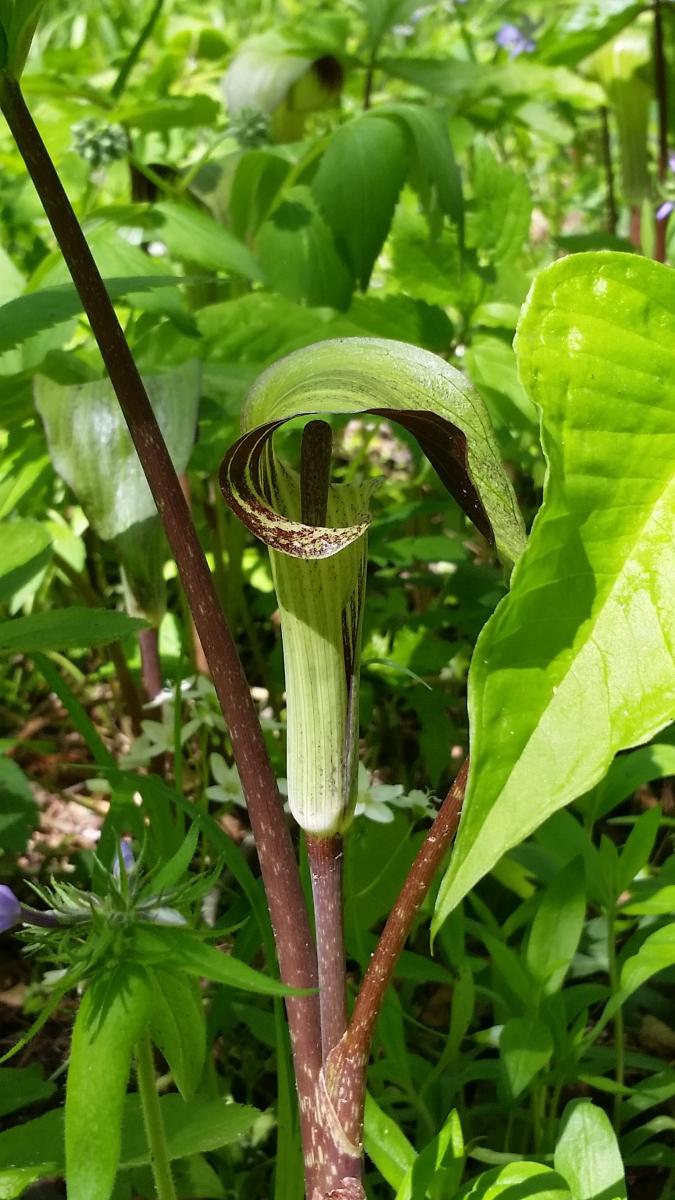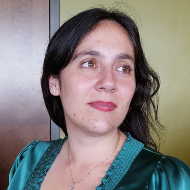Today I got to do two of my favorite things: think about how people learn science and walk in the woods. I was walking in the woods with a purpose, checking out the location for an upcoming Science Booster Club nature hike. These community nature hikes have been surprisingly popular; we’ve beat our expected turnout every time. At first we had experienced botanists lead these hikes and give more or less walking lectures, but now our crowds have become too big for this treatment. I was testing the trail for a group that had fifty families attend their last group nature hike. With that many people, everyone would get tangled into one big knot if we were to try and present lecture-style. So instead, we created highly localized, seasonally appropriate field guides. These small packets are distributed to every family, and knowledgeable guides (including me) were sent around the trail to interact with people and help them identify the birds, fossils, and plants they would encounter along the way.

This approach worked out successfully. It also gave me a great opportunity to interact with people. I was extremely surprised by how little people knew about the natural world, especially considering their enthusiasm for these nature hikes. Although the families were engaged with the activity and appeared to enjoy their surroundings, the vast majority of adults I spoke with did not know the names of even very common plants, such as the violet. I did not meet a single adult who could identify a blackberry vine! This really bothered me, until I thought about it more. Really, where do people normally get a chance to learn about common plants? And maybe it doesn’t really matter if they can tell a blackberry from a violet. What matters is that they do want to learn!
However, this does present me with a problem. My goal in these nature hikes is not only to have people enjoy and appreciate the natural world, but to see in the world around them ways to understand and apply incredibly important concepts, such as evolution and climate change. Without basic knowledge of the natural world, it is understandably difficult for people to engage in higher level types of mental activity, such as those involving application or synthesis of ideas.
While on my hike today I spent a lot of time wondering how to solve this problem. Is there a way I can help people acquire basic knowledge as well as develop their understanding of the complex concepts inherent to the theory of evolution? I think there is.
The joy of a scientific theory is not in its complexity, but in its applicability. That’s one of the reasons phrases like “it’s just a theory” make me so crazy! When people say that, I know they are dismissing a theory without exploring the many ways it can be applied to the world around us. Maybe I can help people understand the natural world better by tossing out basic lessons on plant identification and focusing on big concepts under the umbrella of evolutionary theory. I wonder if people will be able to retain more knowledge about the organisms we encounter on these nature hikes if I present them in terms of their relatedness, point out some of their interesting adaptations, and have people collect information on phenotypic variance within the populations they observe. For example, wild phlox, which grows abundantly in our area and is currently blooming, has a notable range of colors. Many people who do not observe the plant closely think the different colors represent different species. Focusing an activity around this variance would give me a great way to talk with people about some foundational evolutionary concepts. I can point out, for example, that if we are able to recognize that a population has some heritable variability (that is to say, its variations are coded for in DNA), it is not such a stretch to see how that variability could change over time.
We’ll see how this works! I’ll be testing it out next week. I have a feeling that by presenting basic content knowledge in the format of an overarching theory, instead of thinking of a theory as something to build up to, we’ll not only have more fun, but people will make the kinds of mental connections that are essential to having basic content knowledge stick. And if this method proves successful, we can derive some important lessons that might help classroom teachers. One of the big concerns we hear about from teachers is that there “just isn’t enough time.” They are so busy teaching basic content knowledge that they can’t figure out how they could fit in more education on evolution or climate change. For the many educators who feel trapped in this double bind, how great would it be if the solution could be: why not both?

